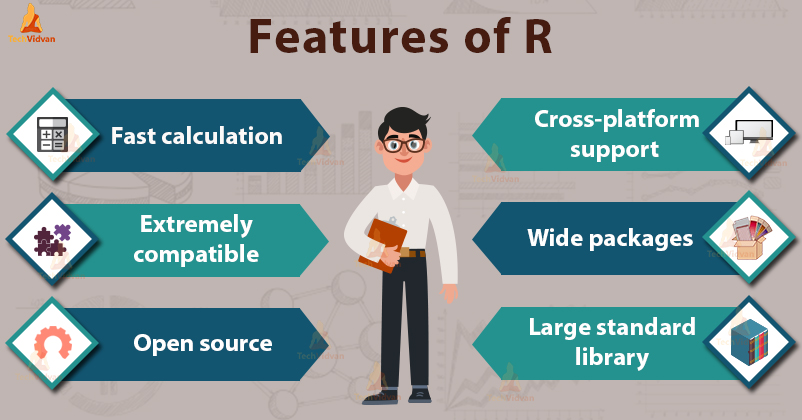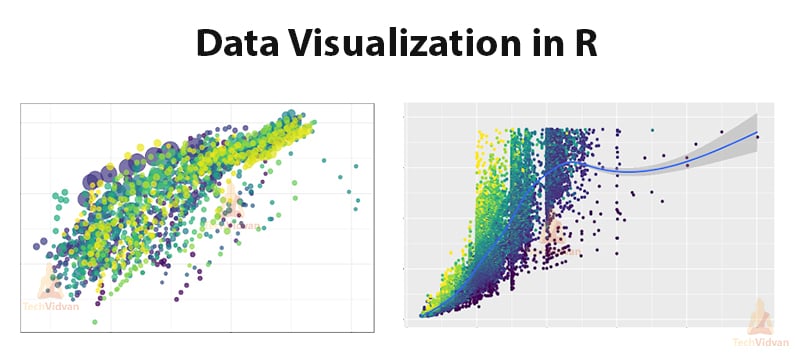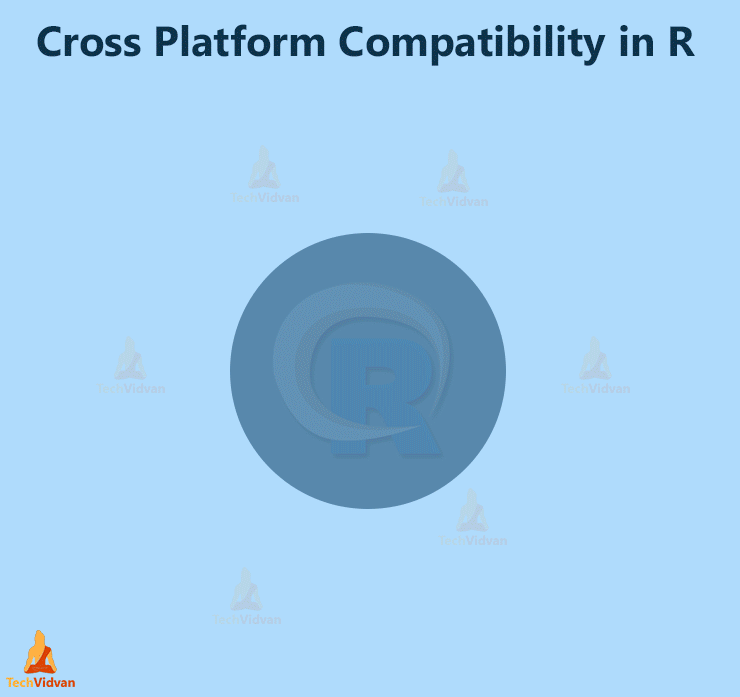15 Features of R Programming you can’t afford to overlook
Make your move to be the next data scientist by looking at the R features and know whether R is worth the attention or not.
Look at everything around yourself and you will observe that you are surrounded by enormous Data!
And to work in the internet factory where the raw material is data the top skill in demand is to process these raw data into business insights.
The art of processing this data is called Data Science and the tool used for processing is a programming language.
So have you started learning Data Science or want to start it?
There is no special programming language dedicated to data science but looking at the exciting features of the R language you can make your mind.
R programming language is filled with such exciting and amazing features. In this article, we will see what makes R so popular, what are the advantages it has over other technologies, and what makes it an indispensable tool for data scientists all over the world.
Let’s look at the amazing features of R and how it can help you to learn data science and become a data scientist.
Features of R Programming
There are many things R can do for data scientists and analysts. These key features are what set R apart from the crowd of statistical languages:
1. Open-source
R is an open-source software environment. It is free of cost and can be adjusted and adapted according to the user’s and the project’s requirements.
You can make improvements and add packages for additional functionalities.
R is freely available. You can learn how to install R, Download and start practicing it.
2. Strong Graphical Capabilities
R can produce static graphics with production quality visualizations and has extended libraries providing interactive graphic capabilities.
This makes data visualization and data representation very easy.
From concise charts to elaborate and interactive flow diagrams, all are well within R’s repertoire. Look at the attractive graphical visualizations in R.
3. Highly Active Community
R has an open-source library which is supported by its growing number of users.
The R environment is continuously growing. This growth is due to its large user-base.
4. A Wide Selection of Packages
CRAN or Comprehensive R Archive Network houses more than 10,000 different packages and extensions that help solve all sorts of problems in data science.
High-quality interactive graphics, web application development, quantitative analysis or machine learning procedures, there is a package for every scenario available.
R contains a sea of packages for all the forms of disciplines like astronomy, biology, etc. While R was originally used for academic purposes, it is now being used in industries as well.
5. Comprehensive Environment
R has a very comprehensive development environment meaning it helps in statistical computing as well as software development.
R is an object-oriented programming language. It also has a robust package called Rshiny which can be used to produce full-fledged web apps.
Combined with data analysis and data visualization, R can be used for highly interactive online data-driven storytelling.
6. Can Perform Complex Statistical Calculations
R can be used to perform simple and complex mathematical and statistical calculations on data objects of a wide variety. It can also perform such operations on large data sets.
7. Distributed Computing
In distributed computing, tasks are split between multiple processing nodes to reduce processing time and increase efficiency.
R has packages like ddR and multiDplyr that enable it to use distributed computing to process large data sets.
8. Running Code Without a Compiler
R is an interpreted language which means that it does not need a compiler to make a program from the code. R directly interprets provided code into lower-level calls and pre-compiled code.
9. Interfacing with Databases
R contains several packages that enable it to interact with databases like Roracle, Open Database Connectivity Protocol, RmySQL, etc.
10. Data Variety
R can handle a variety of structured and unstructured data. It also provides various data modeling and data operation facilities due to its interaction with databases.
11. Machine Learning
R can be used for machine learning as well. The best use of R when it comes to machine learning is in case of exploration or when building one-off models.
12. Data Wrangling
Data wrangling is the process of cleaning complex and inconsistent data sets to enable convenient computation and further analysis. This is a very time taking process.
R with its extensive library of tools can be used for database manipulation and wrangling.
13. Cross-platform Support
R is machine-independent. It supports the cross-platform operation. Therefore, it can be used on many different operating systems.
14. Compatible with Other Programming Languages
While most of its functions are written in R itself, C, C++ or FORTRAN can be used for computationally heavy tasks. Java, .NET, Python, C, C++, and FORTRAN can also be used to manipulate objects directly.
15. Data Handling and Storage
R is integrated with all the formats of data storage due to which data handling becomes easy.
16. Vector Arithmetic
Vectors are the most basic data structure in R, and most other data structures are derived from vectors.
R uses vectors and vector arithmetic and does not need a lot of looping to process a large set of values. This makes R much more efficient.
17. Compatibility with Other Data Processing Technologies
R can be easily paired with other data processing and distributed computing technologies like Hadoop and Spark. It is possible to remotely use a Spark cluster to process large datasets using R.
R and Hadoop can be paired as well to combine Hadoop’s large scale data processing and distributing computing capabilities with R’s statistical computing power.
18. Generates Report in any Desired Format
R’s markdown package is the only report generation package you will ever need when working with R. The markdown package can help produce web pages.
It can also generate reports in the form of word documents or PowerPoint presentations. All with your R code and results embedded into them
Some Unique Features of R Programming
Due to a large number of packages available, there are many other handy features as well:
- Since R can perform operations directly on vectors, it doesn’t require too much looping.
- R can pull data from APIs, servers, SPSS files, and many other formats.
- R is useful for web scraping.
- It can perform multiple complex mathematical operations with a single command.
- Using R Markdown, it can create attractive reports that combine plain text with code and visualizations of the results.
- Due to a large number of researchers and statisticians using it, new ideas and technologies often appear in the R community first.
Summary
In this article, we explored some of the important features of R. We learned why it is the most preferred language for statistical modeling. Its massive repository and sheer versatility make R the most popular statistical language.
Don’t know what exactly R is?
Read what is R and take your first step towards Data Science.
Still, have some doubts? Ask us and our TechVidvan experts will be happy to help you.
Keep Learning 🙂



